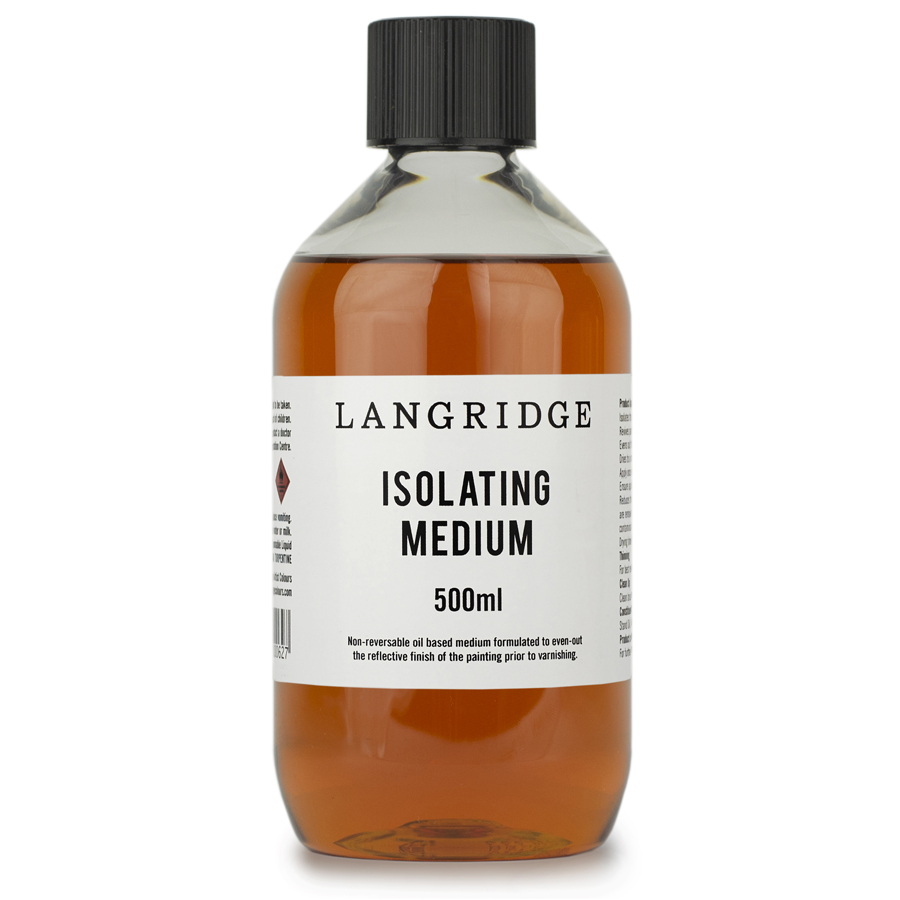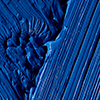Isolating Medium
Isolates the paint film from subsequent varnish. Evens out the reflective quality to an equivalent gloss level. Dries to a non-yellowing permanent coat. Apply once existing paint film is touch dry. Ensure application as evenly and thin a coat as possible. Reduces the opportunity for paint-film destruction when varnishes are removed at a future date due to atmospheric pollution or other contaminants.
Constituents
Stand Oil (40 Poise), Distilled Gum Turpentine.
Product code:
015

Isolating Medium Product Information
Product Application
Isolating Medium’s primary function is to act as a permanent isolating layer between the top paint layer and subsequent application of an final varnish. It creates a tenacious barrier that prevents or reduces the effects of cleaning solvents used in potential future removal of a varnish that may discolour with age or absorption of ingrained pollutants.
Non-reversible, oil-based medium formulated to even-out the reflective finish of the painting prior to varnishing. Dries to a non-yellowing, gloss finish so that the consequent application of a gloss, satin or matt picture varnish can be achieved more easily. Not to be used as a final varnish.
Apply with brush to dry paint surface as thin as possible, treating application as one would with final varnishes. Excessive application dramatically reduces drying times an, in worst case scenarios, lead to wrinkling of the medium during curing.
For the prevention of sinking-in of oil paint
If a support for painting (e.g. canvas) is poorly primed, oil colours will ‘sink-in’ to the surface and exhibit a dull and lifeless colour reflection. The oil from the paint is absorbed into the support, leaving the pigment underbound and the surface liable to crack or dust/flake off. In this case ‘oiling-out’ can rectify the paint film
To even out the final reflective quality of an oil painting
There are numerous reasons for an uneven reflective quality in the final paint film. Differences in the particle size of individual pigments, the various recipes of individual oil colours, the variety of oil mediums, layers and techniques employed etc. generally lead to a finished picture with a wide range of reflective finishes.
Some may like the effect however others may find it distracting.
If the surface has only minor variation, the application of Retouch Varnish once touch dry or a final picture varnish after the painting has had time to dry thoroughly can generally unify the surface.
If the reflective disparity is highly pronounced, a picture varnish may not even the differences out. In this case the surface can easily be rectified by “oiling out” using Langridge Isolating Medium or another “Fat” medium. Oiling out is a non removable process and does not replace a removable artists’ varnish.
The process of oiling out is application of a thin coat of oil with a clean, white, lint-free cloth. Spread in a gentle circular motion, ensuring an even application to the affected areas. Oil out only the areas affected by sinking-in. Do not apply across the whole painting surface.
Thinning
For best results thin with Distilled Gum Turpentine. However, Langridge Low Toxic Solvent Solvent or Solvent 75 may be substituted. Due to the lower solvency action of the latter solvents, an increase in ratio compared to turpentine may be required. Over-thinning with solvents can lead to the partial destruction of the paint film. Langridge recommends a dilution rate of no more than 30%.
Appearance
Langridge Isolating Medium is an amber colour liquid with characteristic Gum Turpentine odour.
Very fresh medium may exhibit a green cast. The colour of the medium will not effect the oil colours with which it is mixed.
Clean Up
Clean brushes with any artists’ solvent (eg Gum Turpentine, Low Toxic Solvent, etc.).
For further washing apply a small quantity of Marseille or other pure olive oil soap and massage the bristles of the brush to release any remaining colour. Wash thoroughly in warm water. Leave to fully dry before using for oil colours.
Drying Times
3-9 days to touch dry. Any airflow over the surface will evaporate the solvent more rapidly which will reduce drying times.
Full film drying 6 months
Safety Data Sheet
This material is hazardous according to health criteria of Safe Work Australia.




